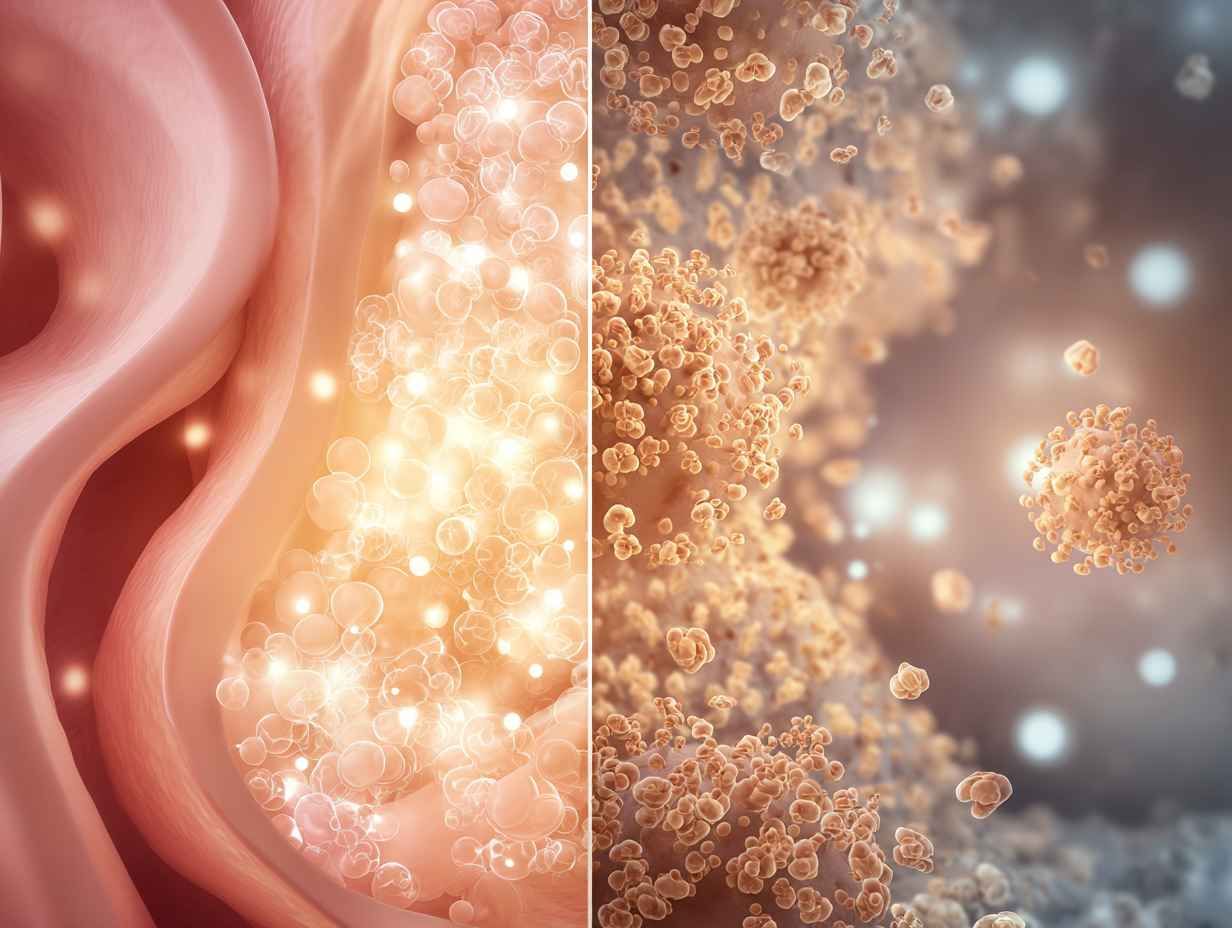Is It Normal to Have White Discharge Every Day?

Is it normal to have white discharge every day? Yes, in most cases, it is. In India, vaginal discharge was seen in about 29 % of women in a community study. Doctors call this leukorrhea. It is part of the body’s way to clean and protect the vagina. A normal daily white discharge is usually thin or milky. It changes with hormone levels during the month. That is why everyday vaginal discharge may look different at times. The meaning of white discharge depends on the colour, smell, and texture. Normal discharge is safe, but unusual signs can point to infection.
White discharge is often normal, but if it’s too much, smelly, or painful, it may signal an imbalance. Book a consultation with Gynoveda doctors to understand the root cause and get safe, Ayurvedic solutions.
Causes of White Discharge Every Day
Do you see white discharge every day and wonder if it is normal? Daily discharge often happens due to hormones, pregnancy, arousal, or lifestyle. Most times, it is normal. In Bareilly, data showed vaginal discharge prevalence of 24.6 % in women. Knowing the reason helps you feel safe and less worried.
Hormonal Changes in the Menstrual Cycle
White discharge during the cycle is common. It changes with ovulation, the luteal phase, and before the period. This is hormonal discharge. It keeps the vagina moist and protected. Daily discharge in these phases is natural. You may notice it more before your period. A follicular study helps track these ovulation-related changes more clearly.
Pregnancy
Many women notice white discharge as a pregnancy sign early. This daily fluid is normal. It protects the vagina from infections. The discharge may feel thick and milky. It shows the body is preparing for pregnancy. This natural change supports a healthy womb for the growing baby. If you’re trying to conceive, knowing the normal sperm count to get pregnant is also important.

Sexual Arousal & Lubrication
You may notice discharge after arousal. This is a lubrication discharge. It comes from glands that prepare the vagina for sex. The body makes this fluid. Daily discharge may increase if you feel aroused often. It is safe, regular, and a healthy body response.
Lifestyle & External Factors
Stress and discharge are often linked. A poor diet, medicines, and exercise changes can also play a role. These are lifestyle causes of discharge. Daily stress may increase it. Drinking water, eating balanced food, and resting can help reduce excess vaginal discharge. For women with PCOS, following a PCOS diet chart may also help manage hormonal discharge.
Many women hesitate to talk about discharge, itching, or vaginal health. You don't have to suffer in silence. Connect with Gynoveda’s women’s health experts for judgment-free, personalized guidance.

When White Discharge May Be Abnormal
White discharge is often expected, but sometimes it shows a health problem. Abnormal white discharge may happen when there is an infection or an imbalance in the body. Knowing the signs can help you act early.
One common reason is a yeast infection. The discharge looks thick and curd-like. It causes itching and burning, which is very uncomfortable for many women.
Bacterial infection is another cause. The discharge becomes thin and grayish and has a fishy odour. This smell is powerful and hard to ignore.
Some sexually spread infections also cause changes. The discharge may turn yellow or green. It is often seen with pain in the lower area.
These infections causing discharge need quick care. Ignoring them may lead to more health issues. If you notice these changes, do not wait. Always get checked to stay safe and healthy.
Difference Between Normal & Abnormal Discharge
Many women want to know the difference between normal and abnormal discharge.
Normal discharge is a sign of healthy function. Abnormal changes can show a hidden problem. Let us see the clear difference.
Normal discharge looks clear or sometimes milky white. It has no smell. It does not cause itching or burning. It also changes with the cycle and may increase around ovulation. This is the body’s natural way to clean and protect itself.
Abnormal discharge looks very different. It can be yellow, green, gray, or even brown. It may smell bad, sometimes strong and fishy. It can cause itching, burning, or pain in the pelvic area. It may also come with swelling or redness.
Knowing the difference between normal and abnormal discharge is important. It helps you act at the right time. If the discharge is abnormal, seek help. Early care prevents bigger health problems later. Stay alert and listen to your body.

When to See a Doctor
Sometimes, it is hard to know when white discharge is not normal.
If you notice sudden changes in your discharge, consult a doctor. If the colour or smell is unusual, it is a warning.
Pain, itching, or burning are not typical signs. This means that the body is fighting an infection. Heavy or watery discharge with pelvic pain is also a red flag.
Do not wait for the problem to grow. If you see these signs, book a checkup fast.
Knowing when white discharge is not normal helps protect your health. Quick action can stop serious problems before they spread.
Ayurvedic View on White Discharge
Ayurveda has a special way of explaining white discharge. 42.3% of women had bacterial infection as the cause of abnormal discharge.
According to Ayurveda, excessive discharge is Shweta Pradara. It indicates a lack of Kapha dosha, and excessive body flow is a sign of high Kapha.
Ayurveda, which means "white discharge," implies herbs and lifestyle modifications. Herbs such as Ashoka, Lodhra, and Shatavari are beneficial. They assist in redressing the dosha and providing body strength.
Lifestyle also plays a role. Eating of a light diet and warm foods is beneficial. Avoid cold and heavy foods. The problem is aggravated by stress, and thus stress control is essential. It is helpful in yoga, meditation, and rest.

These are mild natural remedies for leucorrhea that restore the body to harmony. Harmony brings about health, according to Ayurveda. If the problem persists, consult a specialist. Health in the long run can be secured by applying simple steps to protect women's health. Women with PCOS may also benefit from PCOS treatment in Ayurveda for long-term balance.
In Ayurveda, excessive discharge is called Shweta Pradara, caused by Kapha dosha imbalance. Talk to a Gynoveda gynecologist today and get natural remedies with herbs like Ashoka, Lodhra, and Shatavari.
Lifestyle & Natural Care Tips
Here are simple tips to maintain vaginal health and prevent abnormal discharge.
Wear cotton undergarments. Cotton lets the skin breathe. It absorbs moisture and reduces the chance of infection. Tight synthetic underwear can trap heat and make discharge worse.
Avoid scented soaps and vaginal douching. Strong chemicals disturb the natural balance. They kill healthy bacteria that keep the vagina safe. Mild, unscented soap is enough for outside cleaning. Never use products inside the vagina.
Stay hydrated and eat a balanced diet. Water helps flush toxins. Include probiotics like curd or buttermilk. Add leafy greens, fruits, and nuts. These foods improve immunity and keep natural discharge in check.
Practice safe sex and maintain hygiene. Use protection to lower the risk of infections. Wash your hands before and after contact. Change pads or liners often.
These small steps protect your intimate health and keep discharge normal. Take care today, a few mindful choices will keep you safe and healthy.

Conclusion
Daily white discharge is normal. It is the body’s way of cleaning and protecting itself. Do not panic if you see it often. But notice the changes. If the discharge smells bad, turns yellow or green, or causes itching, it may signal an infection. At that point, seek medical help without delay. Your body gives early warnings. Listen to them. Protect your health with care and act in time.
Daily discharge worrying you? Don't let confusion or discomfort affect your life. Book your Gynoveda consultation today and discover how Ayurveda + modern science can restore balance naturally.
You May Like

Delayed/Irregular Periods Along With White Discharge? Should You Be Worried?

Yellow Vaginal Discharge: Colors, Causes, Signs, and Treatment

Pink Discharge Before Period: Causes, Symptoms, and Treatment

Early Pregnancy Egg White Discharge

10 Natural Ways to Fix Hormonal Imbalance in Women

7 Days PCOS Diet Chart: Foods to Eat and Avoid
Frequent Asked Questions
White discharge every day is not always a sign of fertility. Fertile mucus is usually clear and stretchy. Daily white discharge often helps keep the vagina clean and moist.
Too much white discharge itself does not cause weakness. Weakness happens if the discharge is due to infection. In such cases, medical advice is best for proper care.
Yes, daily discharge is common in teenagers. It happens when hormones start changing during puberty. The discharge keeps the vagina healthy and prevents dryness or irritation.
White discharge usually reduces after menopause. Hormone levels drop, causing dryness in most women. Some still have discharge, but it is often less in amount and frequency.
Yes, dehydration can reduce vaginal discharge. The body needs enough water to maintain fluids. When you drink less, discharge may become thicker, stickier, or less in amount.
No, they are different. Ovulation mucus is clear and stretchy and looks like egg white. White discharge is thicker and creamier. Both are normal but serve other body functions.
Yes, birth control can increase white discharge. Pills change hormone levels, which affect cervical mucus. Some women notice more discharge, while others may see no significant change.
Yes, a poor diet can affect discharge. Eating too much junk food can disturb hormone balance. This may increase discharge. A healthy diet helps keep it normal.
Maintain good hygiene and drink enough water. Eat fresh fruits and vegetables, reduce stress, and avoid tight clothes. These simple steps help balance the body and may reduce excessive discharge.
Yes, stress can increase vaginal discharge. Stress hormones affect the body and can change mucus levels. Managing stress with rest, exercise, or meditation often keeps discharge balanced.

Success Stories with Gynoveda across India
Talk to Gynoveda Today


